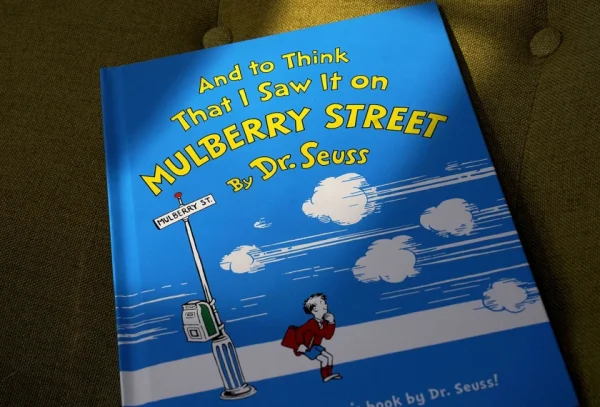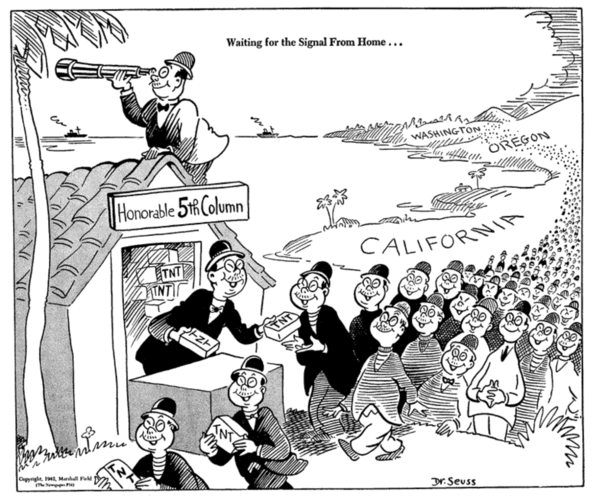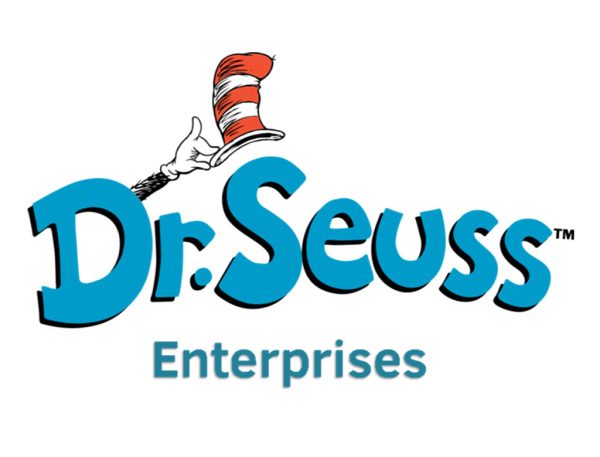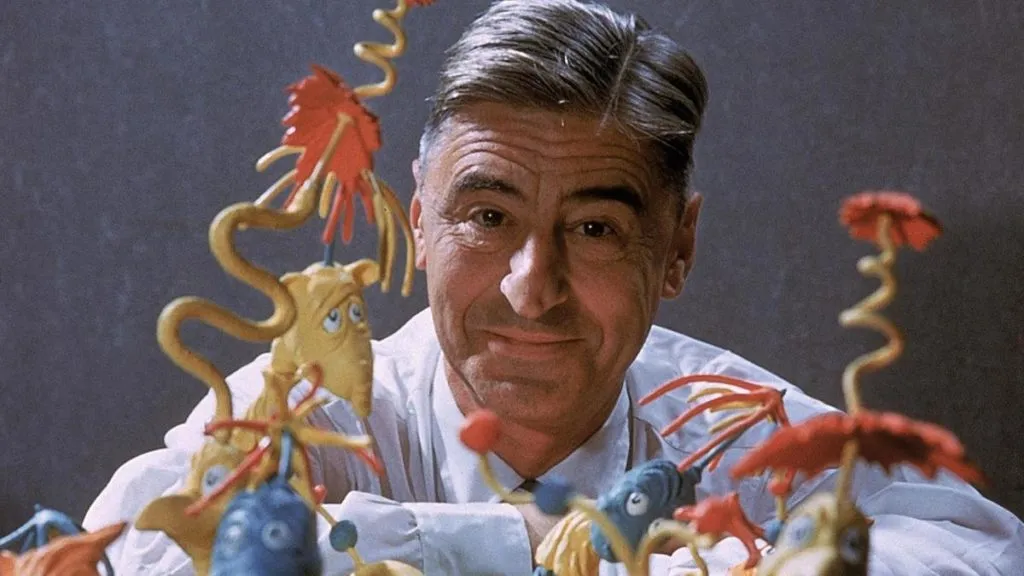Many of us have spent our childhood reading his books like The Cat in the Hat, Green Eggs and Ham, or The Lorax. These seemingly harmless and creative children’s books may be more disturbing than you think.

Theodor Seuss Geisel (1904-1991) began his writing career with a series of humor books as well as cartoons, yet after being rejected by multiple publishers he decided to turn to children’s books. In 1937, with the help of his friend who was an editor, Seuss released And to Think That I Saw It on Mulberry Street. As he continued to write more children’s books, Seuss rose to fame as the iconic Dr. Seuss. He gave himself the name Dr. in order to add more credibility to his writing and honor his fathers wish of him practicing medicine.
Cartoons:

Before and during World War II, Seuss created cartoons for New York City PM Magazine. His political cartoons were often racist and criticized Nazi Germany, Japan, African-Americans, and America’s policies of isolationism. Seuss was racist towards the Japanese, which he described as a threat to society and drew them with animalistic features. Seuss served in the U.S. army from 1943 to 1946. After his service, Seuss returned to children’s books and started making films.
Children’s Books:
Six of Dr. Seuss books have now been stopped from publishing by Dr. Seuss Enterprises in 2021 because of their offensive images. These titles include:
And to Think I Saw It on Mulberry Street: For hurtful and wrong imagery of a Chinese man with a conical hat, lines for eyes, clog shoes and eating a bowl of rice with chopsticks.
If I Ran the Zoo: For stereotypical images of African people. It also referenced Asian people as “helpers who all wear their eyes at a slant”.
McElligot’s Pool: For use of the term “Eskimo” which can be deemed as offensive, and an illustration of “Eskimo fish” in hooded fur parkas.
On Beyond Zebra: For including Nazism, an Arab character that rides a camel.
Scrambled Eggs Super!: For images of fictional Arctic people dressed in fur paddling skin boots.
The Cat’s Quizzer: For an illustration of a yellow character in a coolie hat captioned “how old do you have to be to be a Japanese?”
Marriage:

Dr. Seuss met his first wife, Helen Palmer at Oxford University. The two got married shortly after and expanded their careers as fellow writers. Unfortunately, this marriage wasn’t as healthy as it appeared to the public. Helen committed suicide in 1967 after finding out Seuss cheated on her with with her best friend, Audrey Dimond. He committed this infidelity while Helen was sick with cancer for 13 years. Eight months after Helen’s suicide, Seuss quickly remarried Audrey who already had 2 children. In order to stay with Seuss, Audrey sent her kids away as she thought they wouldn’t get along with him. Other than this, Seuss is not known to have any children.

Currently, Dr. Seuss books are still extremely popular in early childhood education. It is hard to deny that his beloved classics aren’t a staple in school libraries. While Dr. Seuss Enterprises continue to work on “supporting all children and families with messages of hope, inspiration, inclusion, and friendship”, the literature world debates if they should still embrace the company name. Would you let your children read Dr. Seuss books?
Work Cited:
Education Week. https://www.edweek.org/teaching-learning/the-dr-seuss-controversy-what-educators-need-to-know/2021/03
Encyclopedia Britannica. https://www.britannica.com/biography/Dr-Seuss
Vox. https://www.vox.com/culture/22309286/dr-seuss-controversy-read-across-america-racism-if-i-ran-the-zoo-mulberry-street-mcgelliots-pool
Nationalpost. https://nationalpost.com/entertainment/books/here-are-the-wrong-illustrations-that-got-six-dr-seuss-books-cancelled





